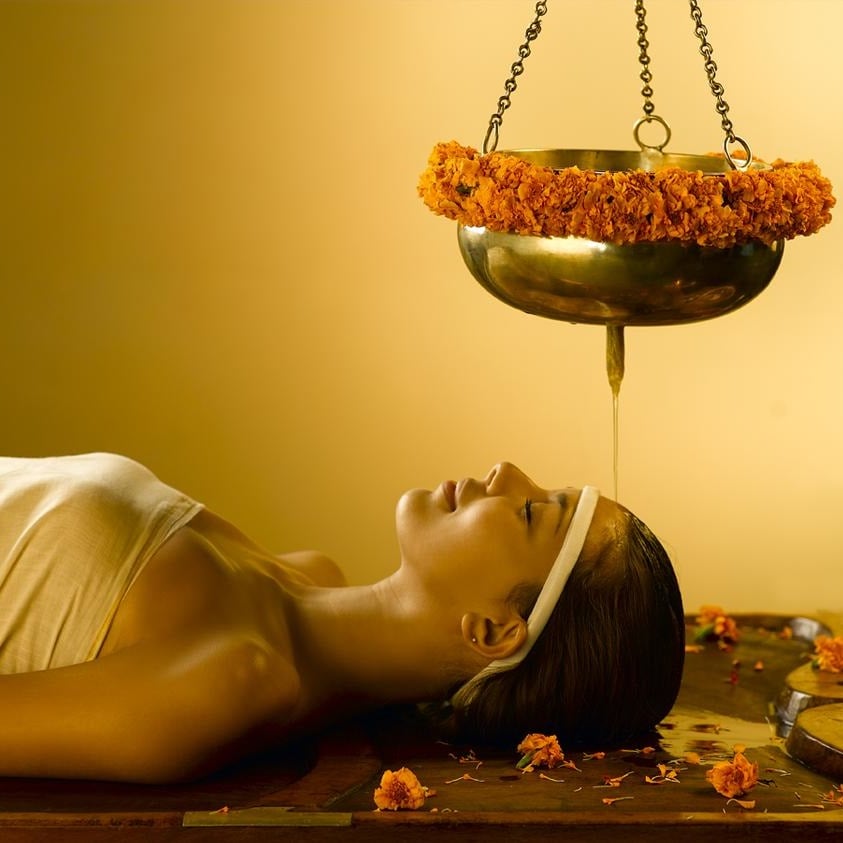Ayurveda Therapy
Ayurveda, the ancient Indian system of healthcare, uses herbs as a natural tool to improve health and treat diseases.
Ayurveda aims to heal the diseases from their roots, than treating just the symptoms. For this process of uprooting, Ayurveda suggests a variety of :
– Panchakarma Therapies –
Five main detoxification procedures.
– Upakarma –
sub therapies such as Oil massage, Shirodhara (stream of oil poured over body), Sweating Treatment etc.

Panchakarma – The five therapies are -
Vamana – Emesis Therapy – intended to get rid of toxins and waste by-products through the oral route. This is useful in disorders pertaining to skin, chest and stomach.
Virechana – Purgation Therapy – intended to eliminate toxins and waste by-products through anal route. This is useful in disorders of liver, pancreas, intestines, skin, etc.
Nasya – Nasal drop therapy used for detoxifying organs of head and neck.
Anuvasana Basti – Oil enema intended to rejuvenate nerves, brain, muscles and joints
Asthapana Basti – intended to detoxify colon and useful in neuro-muscular disorders.
Upakarmas – sub therapies –
Abhyanga – massage of the whole body with herbal oils to induce deep relaxation, to strengthen the body and to relieve pain fix it
Swedana – sweating therapy as a measure to lose weight and toxins via sweating.
Shirodhara – a stream of oil is poured over forehead to increase mental calmness and to relieve anxiety
Lepa – herbal pastes applied over body parts to for skin detoxification
Avagaha – body parts are dipped in oils or herbal liquids
Udvartana – powder massage, useful to relieve excess oiliness and to lose weight
Anjana – collyrium therapy for eye care
Tarpana – oil immersion therapy for eyes for improving vision
Janu Basti, Kati Basti – a compound is constructed over knees or lower back and hot herbal oil is retained for a certain amount of time, useful in arthritis and joint degeneration disorders.
Apart from these, Yoga Habitat offers several other Ayurveda therapies and techniques for comprehensive and holistic physical and mental healthcare.



